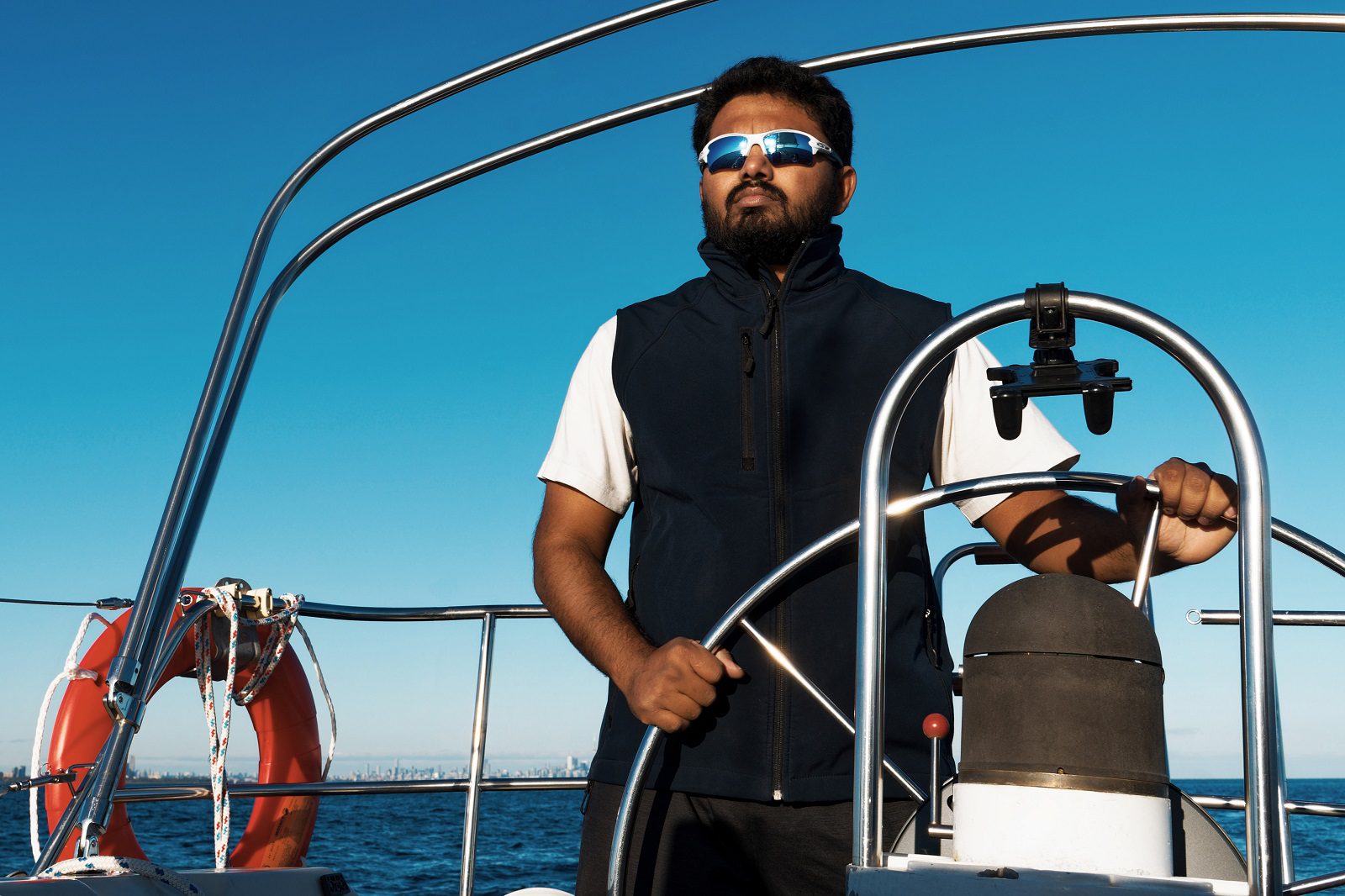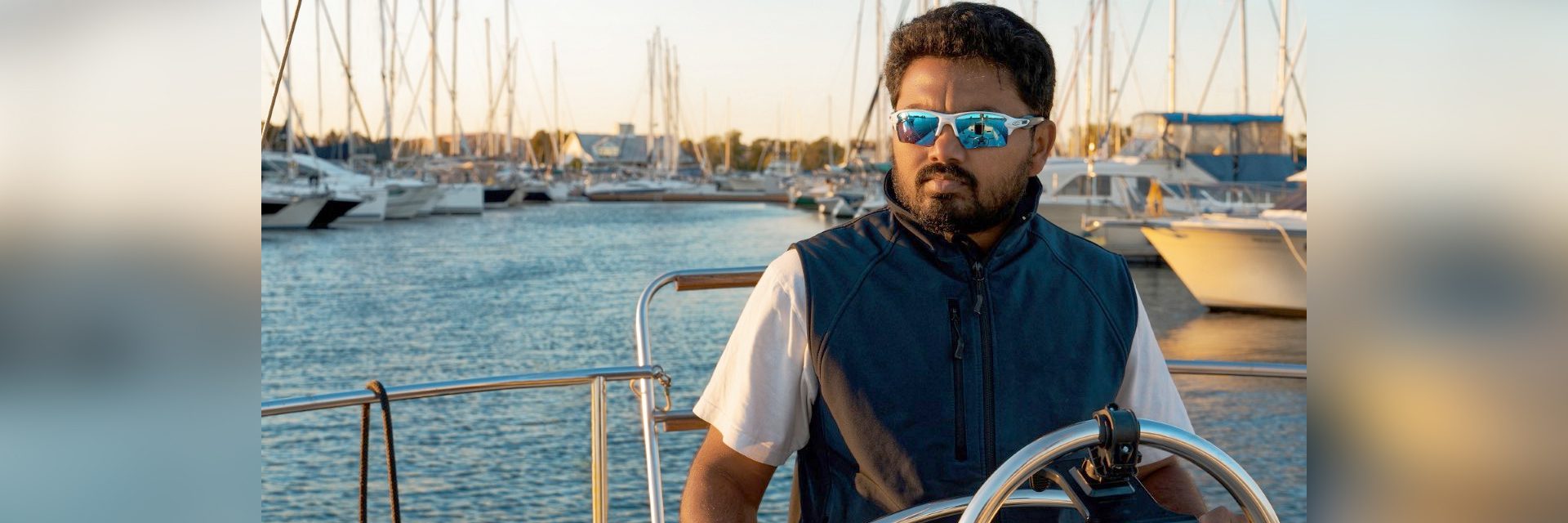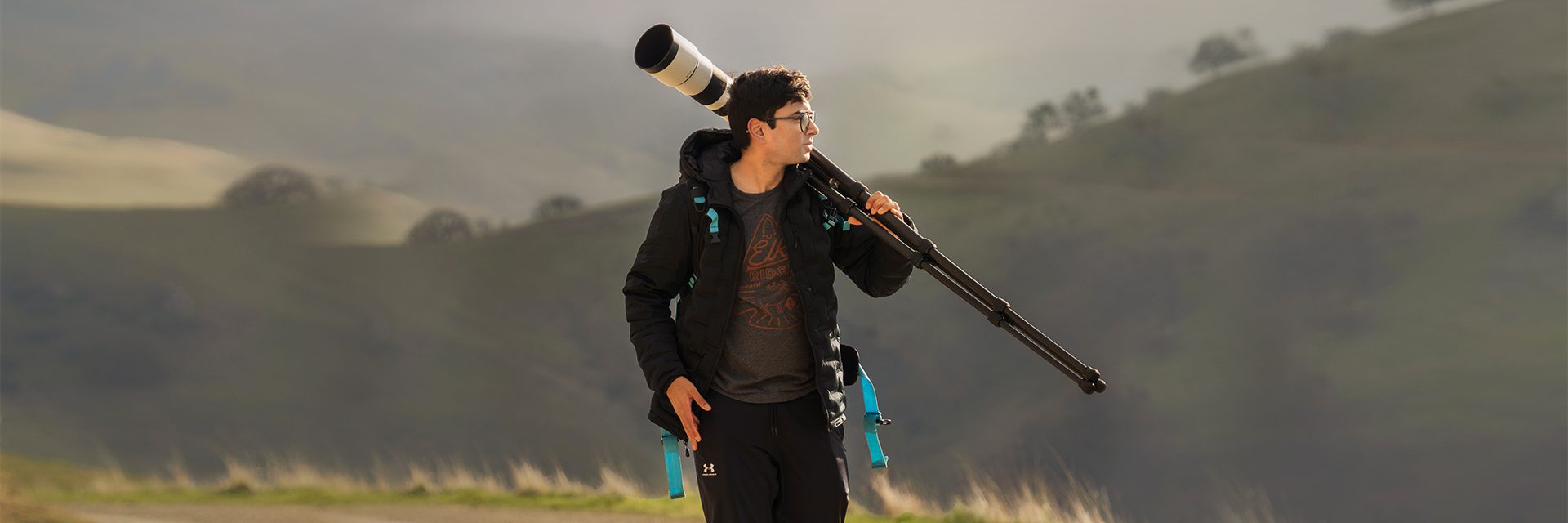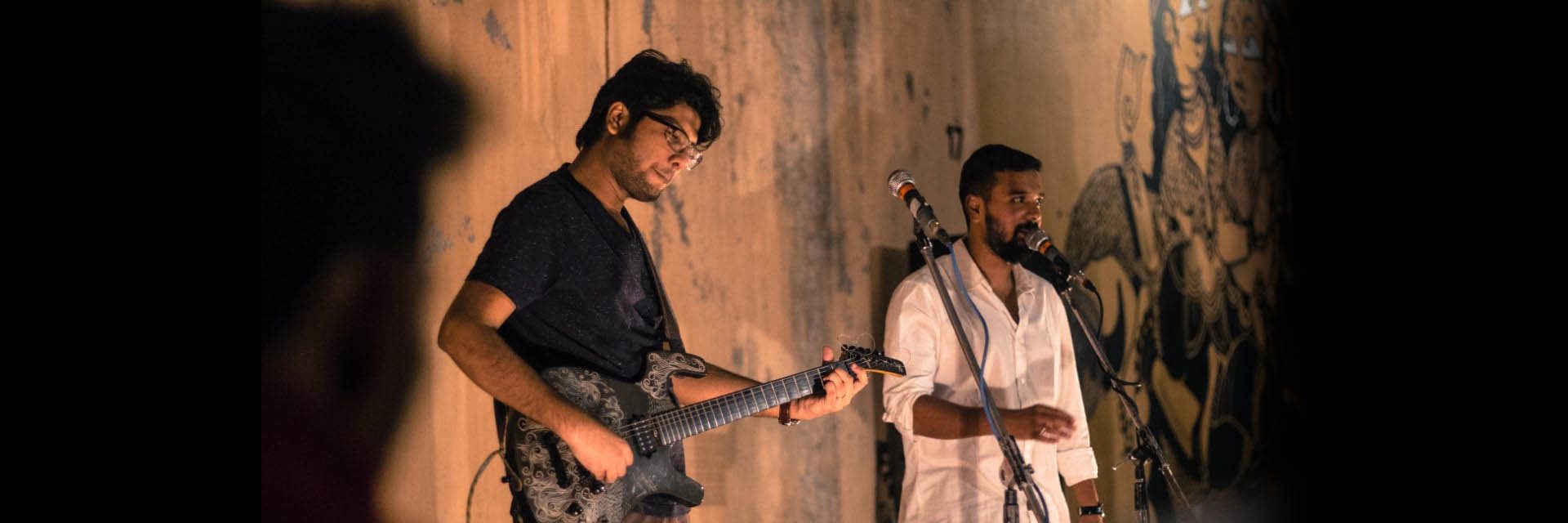(March 30, 2022) In May 2022, Good Hope, a 1980 TaShing Flying Dutchman 35, manned solely by Mumbai boy Gaurav Shinde, will set sail from Toronto. After a few stops along the coast of Canada for fundraising, she will begin the 17-day journey to France, arriving there in June or July, according to Shinde. That’s when the voyage begins. In September 2022, the 35-year-old will embark on a journey that only six sailors before him have ever finished – the 30,000-mile Golden Globe Race. One of the most challenging nautical events in history, the race entails a solo trip around the world and does not allow the use of any modern technology. “That leaves me with the sun, stars and my instincts,” chuckles the India-born sailor, who is quite carefree, all things considered, as he catches up with Global Indian from his home in Toronto. It’s a March morning, and he is back from walking his dogs, pausing our conversation often to talk to his boss – pockets of normalcy in a life that is otherwise inspired by the famous “vagabond” sailor, Bernard Moitessier.
In 1968, Moitessier, a French sailor, participated in the debut edition of the Sunday Times Golden Globe Race. Poised for victory, he changed his mind at the last minute, re-routed and sailed on to Tahiti instead. The next year, Sir Robin Knox became the first person to complete the race, sailing solo non-stop around the world in 312 days. “After that, the race was only revived in 2018,” says Shinde, who estimates that the voyage could take him anywhere between 200 and 300 days to complete.
Made of sterner mettle

Even if sailors are at the mercy of the elements, the Golden Globe Race has strict stipulations about the boat itself. It has to be over 6,000 kilos and between 32 to 36 feet long. He found a boat in New York, and the former owners who took a liking to Shinde, decided to sell it to him even though he didn’t have the money. “They gave me a low-interest loan and reduced the price.” Good Hope sailed back to Toronto with Gaurav, who then began converting the family boat into a racing model.
Today, a small bed is all it contains. “I removed the propane heater because I fill hot water bags and put them in my sleeping bag,” he says. A three-burner stove is customary, as is a gas oven, both of which Gaurav shuns as “just additional weight.” He swaps them for a basic camping stove instead. Even the windows and the skylight were taken out – “It’s just another space where water can come in and I hate that. I prefer a dry boat.” The trip will be, he says, “very minimalistic. It’s basically about removing all the possible points of failure.”
Even stripped of every luxury, a race like this costs around ₹1.6 crore on average, but Gaurav is determined not to let that stand in his way. “I sold my house and bought a smaller one, I haven’t saved much over the past three years,” he says. His earnings have all gone into Good Hope. “I’m looking for sponsors for the race as well.”
Navigating through fierce storms

The preparation? “There’s no preparation. Even if you have done it before, you know that every day is a new day. You can go to the same spot every day and it will be different each time.” The days are busy and their fullness distracts from the extreme isolation. Without GPS, Shinde is dependent on the sun and stars, along with a sextant. “There’s also a radio direction finder. It’s a mix of technology, instinct and nature – you bring in your experiences, recall how you handled the boat in the worst situations, and apply those lessons,” he adds.
Starting out in France, Gaurav will sail south, across the equator, turn left at the Cape of Good Hope, and across the Indian Ocean. At the infamous South African Cape, he will navigate some of the most violent seas – frequent storms, 40-foot high waves and 100 km/hr winds. “I harness myself to the boat just to be sure. I’m pretty careful about what I do – I don’t compromise on safety,” he says.
If Gaurav seems calm, it’s because he has decades of sailing experience – there’s little he hasn’t already faced, both in the water and out of it. “I wanted to be the first Indian to sail non-stop around the world solo,” he admits. The idea came to him around 2007, shortly before he won the 2008 National Offshore Sailing Championship and around the time he met Captain (retd) Dilip Donde, the decorated Indian Navy man. At that time, Donde was planning Project Sagar Parikrama, which involved constructing a sailboat in India and sailing it around the world. Donde began his journey on August 19, 2009 and finished on May 19, 2010.
A chance to be extraordinary
Gaurav’s sailing days began as a kid in Mumbai. Born into a working-class home – his father was a forklift operator and his mother worked as a lab technician – growing up around people with more privilege only made Gaurav determined to find something which made him extraordinary. That came when he was introduced to the Sea Cadet Corps’ Training Ship Jawahar. He went on to win several offshore sailing championships in India.

Without any support, Shinde finished studying and found work. “I was among the first in my family to be so educated, the first to say I wanted to go abroad to study,” Gaurav says. How do his parents feel about his hobby now? “Oh, they have given up,” he chuckles. “But secretly, I think they’re quite proud of me.” He worked with Google for a few years and then moved to Canada for an MBA and has been there since.
Success calls
Around 2013-14, he started the Clipper Round The World Yacht Race but hard-pressed for funds, did only a part of it. He sailed through Brisbane, Singapore and Qingdao (China) to San Francisco. In 2008 and 2011, he won the National Offshore Championships – the second time sailing on an army vessel. “The leader of the army team, a colonel, was a good friend. I had done the same race before and won, so he took me along,” Shinde recalls.
In 2018, the Golden Globe Race was resurrected, and Shinde couldn’t afford to participate. That year, the Navy sent Commander Abhilash Tomy. Some 80 days into the trip, Tomy suffered a huge fall, leaving him paralysed. He was unable to call for help for 72 hours and lay stranded some 1,900 nautical miles from Perth. “Tomy thought about being my manager at that time and I wanted to do the race myself. Since we were in different countries, we couldn’t make that work,” he adds.
Tomy is making a return this year, and will participate in the race once more with a UAE boat. “It’s a sad state of affairs – an Indian sailor having to fly the UAE flag, and not the Indian tricolour,” says Shinde. But support is hard to come by – Shinde funding the voyage himself, without national backing or sponsorship.
A day on a boat
How does a day on the boat unravel? “You wake up in the morning, or according to whatever shift you have planned for yourself,” Shinde explains. “How the day begins depends entirely on how the night went. If you had to stay away, you can sleep in a little longer,” he says. The day begins with an inspection of the vessel and taking care of the minor repairs. The best time to navigate is at noon, where if the sky is clear, he can use the sun and pick another celestial sight. The process takes about an hour to get right. Sails have to be changed according to the wind conditions and a rudimentary weather forecast sent through a fax machine will alert him to a storm, if there is one. “By the time I’m done prepping, it’s evening and I will get on a call with the other skippers. There’s always something happening. You’re so busy, you forget that you’re alone at sea.”
Also Read: How Gangs of LA learnt Mandar Apte’s Art of Living



